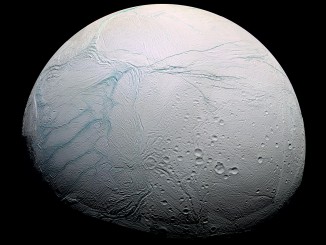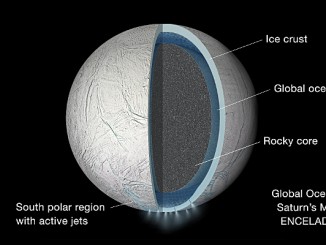
Carolyn Porco


Computer model explains sustained eruptions on Saturn’s moon Enceladus
NASA’s Cassini spacecraft has observed geysers erupting on Saturn’s icy moon Enceladus since 2005, but the process that drives and sustains these eruptions has remained a mystery. Now, scientists have pinpointed a mechanism by which cyclical tidal stresses exerted by Saturn can drive Enceladus’s long-lived eruptions.

Cassini finds global ocean under icy crust of Saturn’s moon Enceladus
A global ocean lies beneath the icy crust of Saturn’s geologically active moon Enceladus, according to new research using data from NASA’s Cassini mission. Researchers found the magnitude of the moon’s very slight wobble, as it orbits Saturn, can only be accounted for if its outer ice shell is not frozen solid to its interior, meaning a global ocean must be present.

Cassini’s final breathtaking close views of Saturn’s moon Dione
A pockmarked, icy landscape looms beneath NASA’s Cassini spacecraft in new images of Saturn’s moon Dione taken during the mission’s last close approach to the small, frozen world. Two of the new images show the surface of Dione at the best resolution ever. Cassini passed 295 miles (474 kilometres) above Dione’s surface at 7:33pm BST on 17 August 2015.
